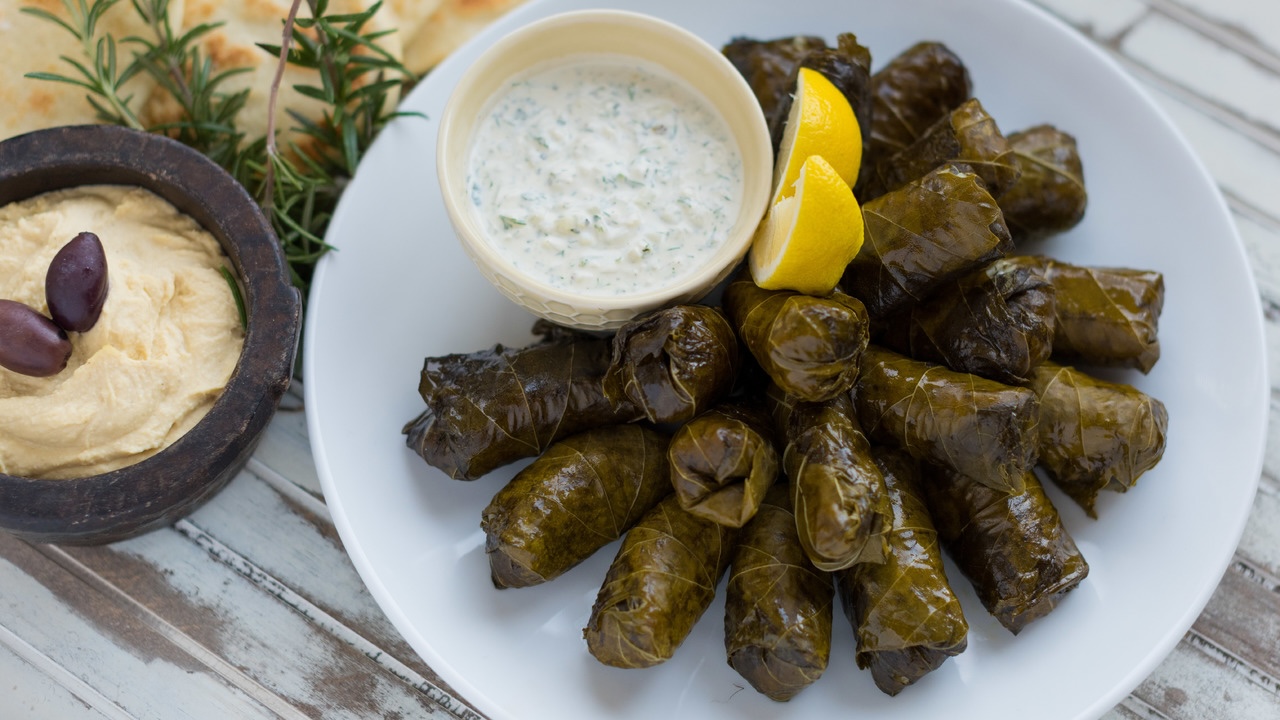
Dolmades are a delicious and iconic dish from Greek cuisine, often enjoyed as an appetizer or main course. These delightful parcels are made by wrapping grape leaves around a savory filling, typically consisting of rice, herbs, and sometimes meat. But what makes dolmades so special? Dolmades have a rich history that dates back to ancient times, and they are more than just a tasty treat. They represent a blend of cultural influences and culinary traditions. Whether you're a seasoned foodie or a curious beginner, learning about dolmades can offer a deeper appreciation for this beloved dish. Ready to dive into 30 fascinating facts about dolmades? Let's get started!
What Are Dolmades?
Dolmades are a beloved dish in Mediterranean cuisine, particularly in Greek and Turkish traditions. These delightful parcels are typically grape leaves stuffed with a variety of fillings. Let's dive into some fascinating facts about dolmades.
-
Dolmades are often served as an appetizer or meze, a small dish meant to be shared.
-
The word "dolma" comes from the Turkish verb "dolmak," meaning "to be stuffed."
-
Traditional fillings include rice, pine nuts, and herbs like dill and mint.
-
Meat versions often feature ground lamb or beef mixed with rice and spices.
-
Grape leaves are the most common wrapping, but cabbage leaves can also be used.
Historical Roots of Dolmades
Dolmades have a rich history that spans several cultures and centuries. Their origins are as intriguing as their flavors.
-
Dolmades date back to the Ottoman Empire, where they were a staple in royal kitchens.
-
Ancient Greeks also enjoyed a version of dolmades, often filled with grains and honey.
-
The dish spread throughout the Middle East and the Balkans, each region adding its unique twist.
-
In ancient times, dolmades were considered a symbol of hospitality and were often served to guests.
-
Some historians believe that dolmades were inspired by Persian cuisine, which also features stuffed vegetables.
Ingredients and Preparation
The ingredients and preparation methods for dolmades can vary widely, but some elements remain consistent.
-
Fresh grape leaves are preferred, but jarred leaves in brine are a convenient alternative.
-
The rice used in dolmades is usually short-grain, which becomes tender and sticky when cooked.
-
Lemon juice is a key ingredient, adding a tangy flavor that complements the savory filling.
-
Olive oil is generously used, both in the filling and to coat the grape leaves before cooking.
-
Some recipes include currants or raisins for a touch of sweetness.
Cooking Techniques
Cooking dolmades requires patience and precision. The process is as much an art as it is a science.
-
Dolmades are typically simmered in a pot with water or broth until the rice is fully cooked.
-
A plate or lid is often placed on top of the dolmades to keep them from unraveling during cooking.
-
Some cooks prefer to bake dolmades in the oven, which gives them a slightly different texture.
-
Slow cooking allows the flavors to meld together, resulting in a more harmonious dish.
-
Dolmades can be served warm or at room temperature, making them versatile for various occasions.
Nutritional Benefits
Dolmades are not only delicious but also packed with nutritional benefits. They offer a balanced mix of protein, carbs, and healthy fats.
-
Grape leaves are rich in vitamins A and K, as well as antioxidants.
-
The rice provides a good source of carbohydrates, essential for energy.
-
Olive oil contributes healthy monounsaturated fats, which are good for heart health.
-
Herbs like dill and mint add not only flavor but also beneficial nutrients and antioxidants.
-
Meat-filled dolmades offer additional protein, making them a more substantial meal option.
Cultural Significance
Dolmades hold a special place in the hearts and kitchens of many cultures. They are more than just a dish; they are a tradition.
-
In Greece, dolmades are often served during festive occasions and family gatherings.
-
Turkish families pass down dolma recipes through generations, each adding their unique touch.
-
In Lebanon, a similar dish called "warak enab" is a staple at celebrations and feasts.
-
Dolmades are a popular item in Mediterranean restaurants worldwide, showcasing their global appeal.
-
The dish is often featured in cooking classes and food tours, highlighting its cultural and culinary importance.
Final Bite of Dolmades
Dolmades are more than just a tasty dish; they’re a bite of history and culture. These little grape leaf parcels have been enjoyed for centuries, from ancient Greece to modern kitchens worldwide. Whether stuffed with rice, meat, or a mix of both, they offer a unique blend of flavors that can be both comforting and exotic.
Making dolmades can be a fun family activity, bringing everyone together to roll and stuff the leaves. Plus, they’re versatile enough to fit into various diets, from vegetarian to meat-lover. So next time you’re looking for something different to cook, why not give dolmades a try? You’ll not only enjoy a delicious meal but also connect with a rich culinary tradition. Happy cooking!
Was this page helpful?
Our commitment to delivering trustworthy and engaging content is at the heart of what we do. Each fact on our site is contributed by real users like you, bringing a wealth of diverse insights and information. To ensure the highest standards of accuracy and reliability, our dedicated editors meticulously review each submission. This process guarantees that the facts we share are not only fascinating but also credible. Trust in our commitment to quality and authenticity as you explore and learn with us.
